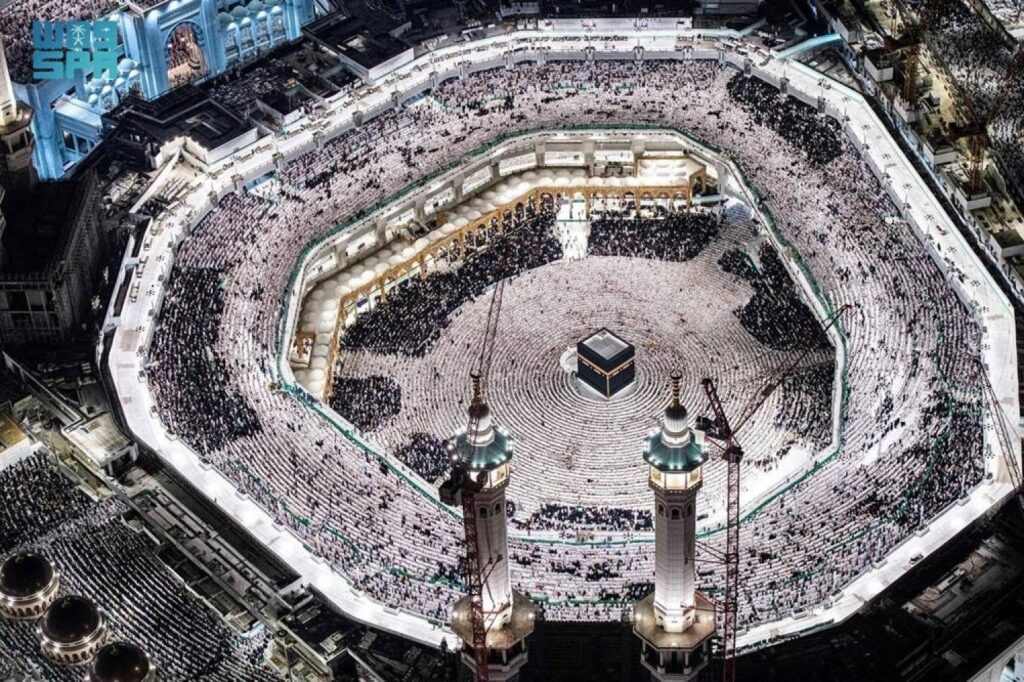The Grand Mosque in Makkah, known as the Masjid Al Haram, stands as a symbol of spiritual devotion and architectural grandeur. Millions of Muslims worldwide journey to Makkah to perform their religious rituals, and one of the most remarkable features of the mosque is the coolness of its marble flooring, even amidst the scorching heat of the desert. In this article, we delve into the intricacies of this phenomenon, shedding light on the role of rare Greek marble in maintaining the Grand Mosque’s cool ambiance.
The Grand Mosque’s Marble Flooring: A Testament to Engineering Marvel
The Grand Mosque’s floor, crafted from Thassos marble imported from Greece, is not merely a decorative element but a marvel of engineering ingenuity. Thassos marble is renowned for its exceptional heat-reflecting properties, which enable it to remain cool even under the relentless Arabian sun. This unique characteristic transforms the marble flooring into a sanctuary of comfort, offering respite to pilgrims amidst the desert’s unforgiving climate.
Thassos Marble: Nature’s Gift to Architectural Brilliance
Thassos marble derives its name from the Greek island of Thassos, where it is quarried in limited quantities. Its pristine white hue, devoid of impurities, lends an aura of purity and sanctity to the spaces it adorns. However, beyond its aesthetic allure, Thassos marble possesses remarkable thermal properties, making it an ideal choice for architectural projects in regions with extreme climates.
The Science Behind Thassos Marble’s Coolness
The secret to Thassos marble’s ability to remain cool lies in its crystalline structure, which reflects sunlight rather than absorbing it. When exposed to intense heat, the marble efficiently deflects solar radiation, thereby preventing significant temperature elevation. This inherent property ensures that the surface temperature of Thassos marble remains noticeably lower than that of conventional building materials, such as concrete or ceramic tiles.
A Sanctuary Amidst the Desert Heat
Saudi Arabia’s arid climate poses significant challenges for those performing religious rites in outdoor spaces. The Grand Mosque’s expansive courtyard, paved with Thassos marble, serves as an oasis of coolness amidst the desert heat. Pilgrims, clad in traditional attire, can traverse the marble flooring with ease, unhampered by the discomfort typically associated with hot surfaces.
Importance of Cool Marble in Religious Practice
The utilization of Thassos marble in the Grand Mosque underscores a commitment to ensuring the comfort and safety of worshippers. During peak pilgrimage seasons, when temperatures soar, the cool marble flooring becomes a sanctuary for pilgrims seeking solace in prayer. Its temperature-regulating properties mitigate the risk of heat-related illnesses, thereby facilitating uninterrupted worship and spiritual reflection.
Sustainable Solutions for Modern Challenges
In an era marked by environmental consciousness and sustainability, the choice of Thassos marble aligns with principles of eco-friendly design. By harnessing natural materials renowned for their thermal efficiency, architects and engineers can create spaces that prioritize human comfort while minimizing energy consumption. The Grand Mosque’s adoption of Thassos marble exemplifies a fusion of tradition and innovation, where ancient craftsmanship meets contemporary sustainability practices.
Conclusion: A Testament to Timeless Elegance and Practicality
The Grand Mosque in Makkah stands as a beacon of spiritual devotion and architectural excellence. Its utilization of rare Greek marble, specifically Thassos marble, epitomizes the marriage of aesthetics and functionality. As pilgrims from around the globe converge upon this sacred site, they are greeted by the cool embrace of marble flooring—a tangible manifestation of meticulous craftsmanship and thoughtful design.

